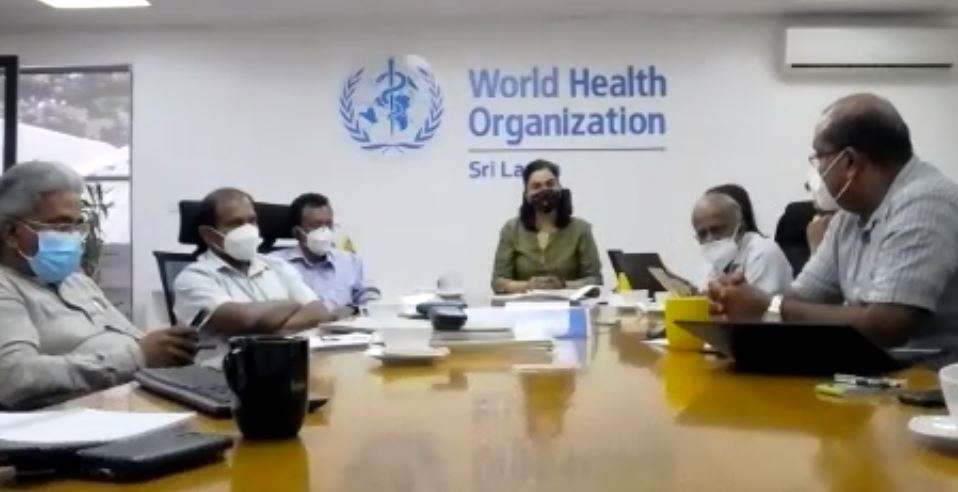Reply To:
Name - Reply Comment

The World Health Organization (WHO) expert group said today that Sri Lanka is showing a rapid increase in daily reported number of cases and deaths and the trends indicate that Sri Lanka could soon face a health crisis of unprecedented proportions.
The Experts noted with great concern the current surge in COVID-19, nearly overwhelming the capacity of the health systems to provide the required adequate care for the people.
The Experts recommend that their urgent priority is to SAVE LIVES. Sri Lanka will avert about 18,000 deaths by Jan 2022 if the level of stringency is immediately increased similar to May 2021 for 4 weeks.
This will give the required time to accelerate vaccination and achieve the level of protection following the second dose of vaccines; as well as for the health system to recover from the overwhelming case load.
Immediate actions are crucial and critical because it takes a few weeks before measures show a positive impact on the number of infections and hospital admissions. Any delay in implementation will lead to increase in deaths and will require even more stringent measures with longer duration to regain control.
The WHO said at the 5th Independent Expert Group Meeting on the current COVID-19 situation and way forward, that bed occupancy rates at all levels of care facilities (over 85%) and ICU’s (over 90%) have increased progressively and is now in full capacity. Patients dependent on oxygen have significantly increased from 528 last week to 646 patients yesterday. If this trend continues, there is inevitability of a serious shortage of oxygen supply and interruption of care.
Many areas of the country show a high PCR test positivity rate of over 20%.
Significant number of health workers are getting infected with a consequent pressure for curtailment and closure of services. All indications are that the staff are exhausted and struggling.
The Monash University, Australia in collaboration with WHO SEAR and Sri Lanka County Office did some projections on notified cases and deaths using the MoH Epidemiology Unit data. The projections assumed that 50% will be fully vaccinated by end of August 2021.
At current levels of mobility restrictions, the number of cases would increase up to mid-September at 6,000 cases/ day, deaths up to early October coming to a peak at around 220 deaths/day. ICU admission will peak at around 275 by early October with cumulative deaths around 30,000 by Jan 2022. But note that since we have not yet achieved the vaccine coverage assumed in the model, the projections are an under-estimate.
At increased levels of stringency (similar to May-June 2021) for 4 weeks, the country will have less numbers of cases of around 1,000 /day, deaths less than 25 /day and ICU care to less than 25 /day (by October 2021) and avert 18,000 deaths by Jan 2022.
More detailed recommendations are that Sri Lanka should:
Strictly enforce movement restrictions, including inter-district travel except for essential services. The effective implementation of these measures may require the enforcement of a curfew for a short period, in large geographic areas or nationally.
Restrict /cancel all public events for 3 weeks.
Provide care and protect the health workers and augment staffing in hospitals to minimize disruption of essential health services.
Develop and implement an effective communication plan to engage the public and to update them on the control measures.
Accurate reporting of both cases and deaths to get a better picture of the ground situation. May also use proxy indicators such as observed Test Positivity Rate (TPR), trends measured using weekly moving averages and time series analysis, mobility data, etc.
Prioritize to vaccinate all those over 60 years old and those with co-morbidities, preferably with Pfizer, Moderna or Astra Zeneca because even a single dose of these vaccines provides some degree of protection until the second dose is given.